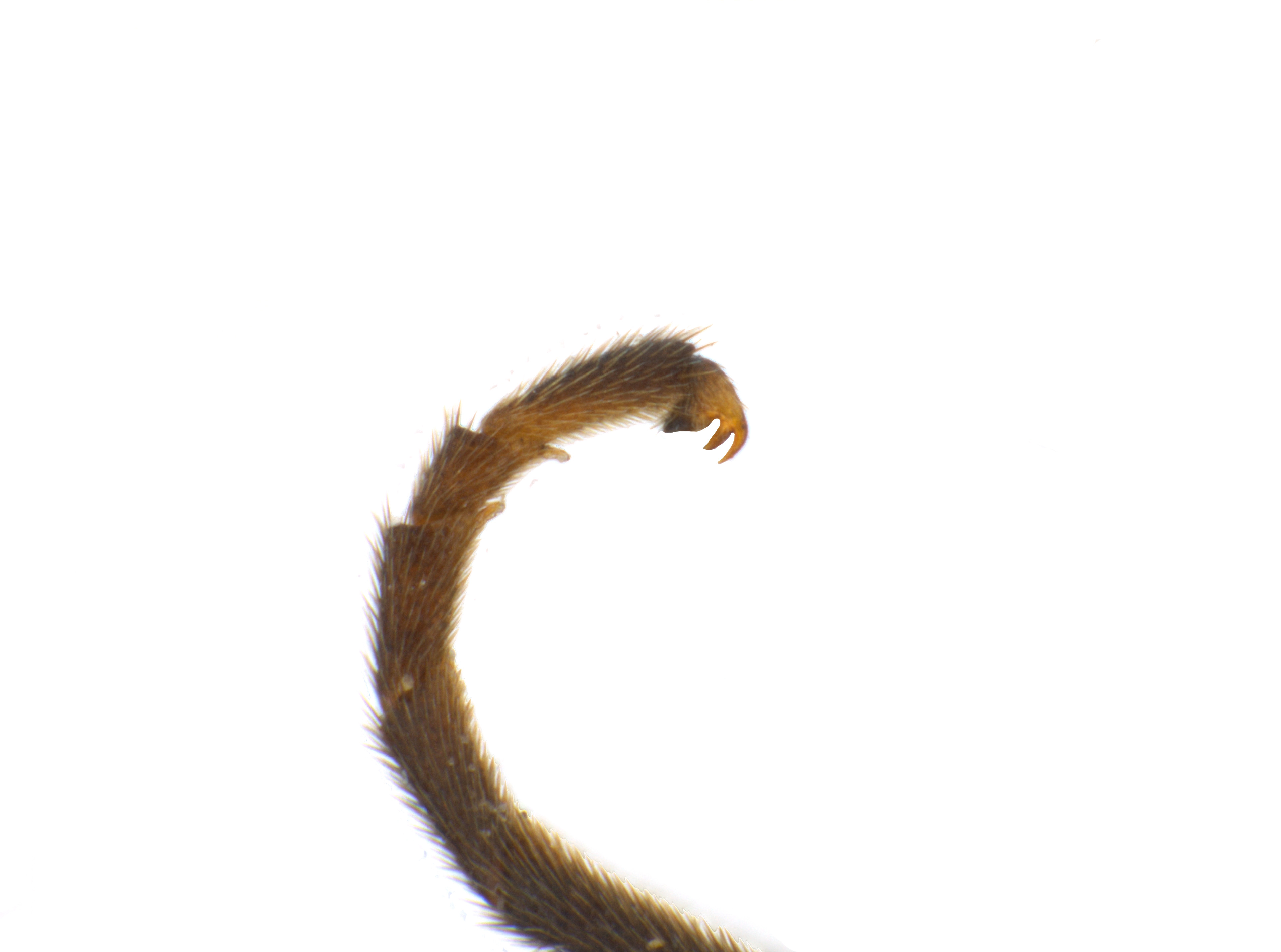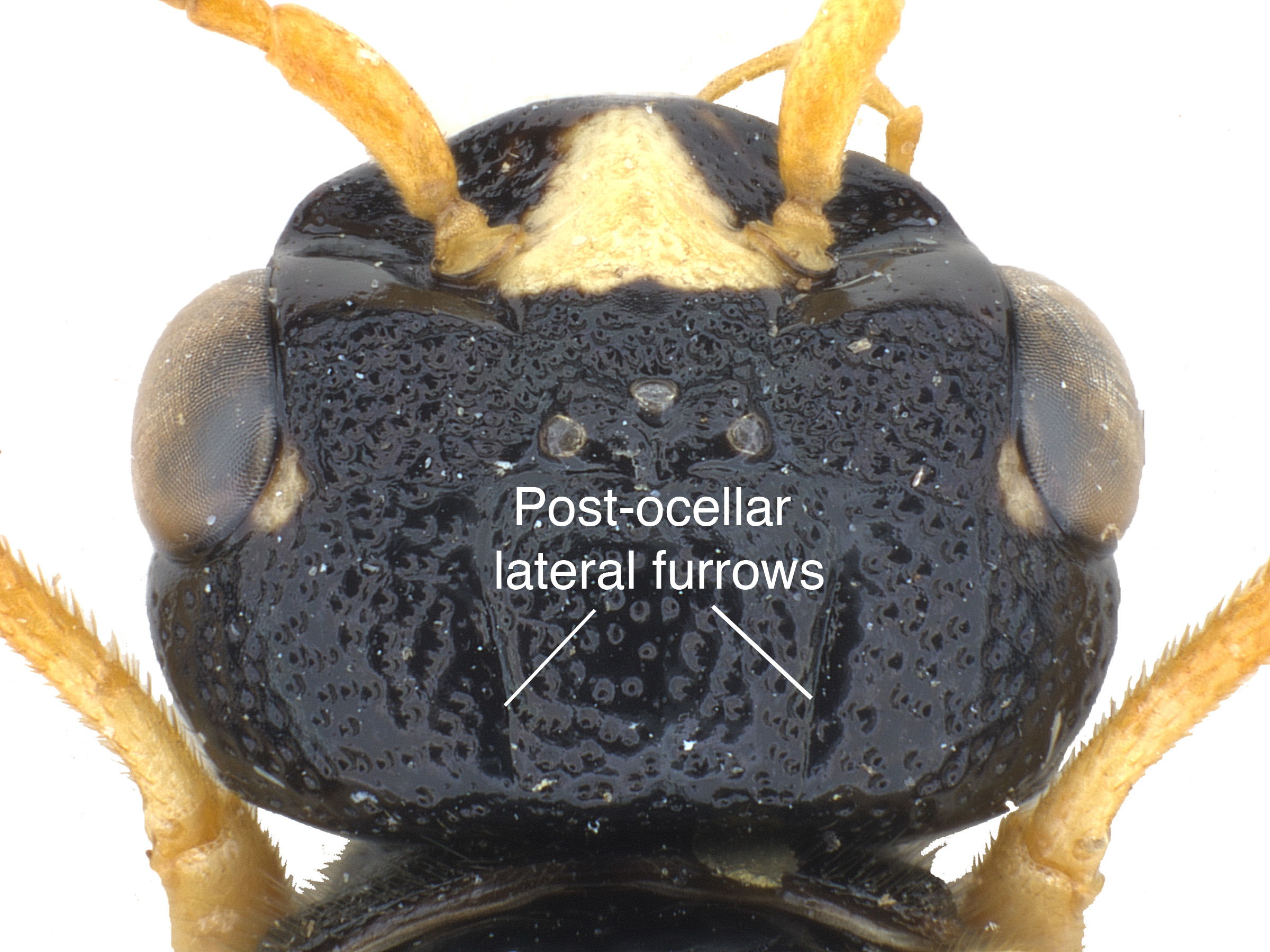Family: Tenthredinidae
Family common name: common sawflies
Subfamily: Blennocampinae
Tribe: Blennocampini
Genus: Ardis Konow, 1886
Subgenera: none
The Tenthredinidae are the most species-rich family and are found throughout the world, in all continents but Antarctica. They are known as the “common sawflies.” They can generally be recognized by a cylindrical body and long, segmented antennaeantenna:
the sensory organ emerging from the front of the head, usually between the compound eyes and above the clypeus; includes the flagellum, scape and pedicel
 . Otherwise, they come in a variety of colors, sizes, and forms (Goulet 1992Goulet 1992:
. Otherwise, they come in a variety of colors, sizes, and forms (Goulet 1992Goulet 1992:
Goulet H. 1992. The genera and subgenera of the sawflies of Canada and Alaska: Hymenoptera. Symphyta. The insects and arachnids of Canada. Part 20. Agriculture Canada Publication.).
Sawflies in the subfamily Blennocampinae have a diverse set of life histories and habits. Many species are restricted to subtropical and tropical regions, but the genus is still fairly species-rich in North America. Blennocampinae includes many sawflies that feed on ornamental and forestry crops. This subfamily can be recognized by wing venationvenation:
the network of veins on a wing
and bidentatebidentate:
having two teeth; often used in descrbing mandibles or tarsal claws
 mandibles (Smith 1969dSmith 1969d:
mandibles (Smith 1969dSmith 1969d:
Smith DR. 1969d. Nearctic Sawflies. I. Blennocampinae: Adults and larvae (Hymenoptera: Tenthredinidae). Technical Bulletin, U.S. Department of Agriculture 1397: 1-176.).
Ardis is medium-sized, about 6.4–7 mm in length, and entirely black with transparent wings (Smith 1969dSmith 1969d:
Smith DR. 1969d. Nearctic Sawflies. I. Blennocampinae: Adults and larvae (Hymenoptera: Tenthredinidae). Technical Bulletin, U.S. Department of Agriculture 1397: 1-176.).
There are five described extantextant:
in existence; opposite of extinct
species worldwide. Two species occur in North America (Taeger et al. 2010Taeger et al. 2010:
Taeger A, Blank SM, and Liston AD. 2010. World Catalog of Symphyta (Hymenoptera). Zootaxa 2580: 1-1064.).
A key to NearcticNearctic:
describing the region of the Northern Hemisphere that includes North America south through northern Mexico
 species is included in Smith 1969dSmith 1969d:
species is included in Smith 1969dSmith 1969d:
Smith DR. 1969d. Nearctic Sawflies. I. Blennocampinae: Adults and larvae (Hymenoptera: Tenthredinidae). Technical Bulletin, U.S. Department of Agriculture 1397: 1-176..
Subfamily characters
 veins Cu1 and 1m-cu between 120°–150° (Goulet 1992Goulet 1992:
veins Cu1 and 1m-cu between 120°–150° (Goulet 1992Goulet 1992: veins M and 1m-cu parallel (Smith 1969dSmith 1969d:
veins M and 1m-cu parallel (Smith 1969dSmith 1969d: veins 2A and 3A incomplete (Smith 1969dSmith 1969d:
veins 2A and 3A incomplete (Smith 1969dSmith 1969d:Genus characters
 as long as wide (Smith 1969dSmith 1969d:
as long as wide (Smith 1969dSmith 1969d: wide and with large pits (Goulet 1992Goulet 1992:
wide and with large pits (Goulet 1992Goulet 1992: veins 2A and 3A curved at apexapex:
veins 2A and 3A curved at apexapex: cellcell:
cellcell: M present (Smith 1969dSmith 1969d:
M present (Smith 1969dSmith 1969d: with long inner tooth (Goulet 1992Goulet 1992:
with long inner tooth (Goulet 1992Goulet 1992: basalbasal:
basalbasal:Ardis can be confused with similar species in the subfamily Blennocampinae. It can be distinguished from most other genera by the deep postocularpostocular:
describes area behind the compound eye
furrowfurrow:
a groove or linear depression
 and curved apexapex:
and curved apexapex:
the end or most distal area of any structure
of fore wingfore wing:
the anterior wing of each pair of wings; usually the largest wing of the pair
 veins 2A and 3A (Smith 1969dSmith 1969d:
veins 2A and 3A (Smith 1969dSmith 1969d:
Smith DR. 1969d. Nearctic Sawflies. I. Blennocampinae: Adults and larvae (Hymenoptera: Tenthredinidae). Technical Bulletin, U.S. Department of Agriculture 1397: 1-176.).
none
In North America, Ardis feed on species of Rosa (rose) (Goulet 1992Goulet 1992:
Goulet H. 1992. The genera and subgenera of the sawflies of Canada and Alaska: Hymenoptera. Symphyta. The insects and arachnids of Canada. Part 20. Agriculture Canada Publication.).
The specific biology of Ardis atrata is unknown.
Ardis brunniventris is known as the rose tip sawfly and is considered a minor pest of wild and ornamental roses. The larvaelarva:
the immature stage of holometabolous insects
 burrow into stems of rose plants and feed on the pith. The affected part of the plant will wither, and the bud will not bloom (Gutue and Ungureanu 2015Gutue and Ungureanu 2015:
burrow into stems of rose plants and feed on the pith. The affected part of the plant will wither, and the bud will not bloom (Gutue and Ungureanu 2015Gutue and Ungureanu 2015:
Gutue C and Ungureanu F. 2015. Combating the rose tip-infesting sawfly: Ardis brunniventris HTG. In: Agrarian Economy and Rural Development - Realities and Perspectives for Romania. 6th Edition of the International Symposium, The Research Institute for Agricultural Economy and Rural Development (ICEADR), Bucharest, pp. 237-240.). The larvalarva:
the immature stage of holometabolous insects
 has reduced prolegs (Smith 1969dSmith 1969d:
has reduced prolegs (Smith 1969dSmith 1969d:
Smith DR. 1969d. Nearctic Sawflies. I. Blennocampinae: Adults and larvae (Hymenoptera: Tenthredinidae). Technical Bulletin, U.S. Department of Agriculture 1397: 1-176.).
World: This genus is known from North America, Europe into Turkey, India, and Pakistan (Smith 1971dSmith 1971d:
Smith DR. 1971d. The Neotropical sawflies described by Norton and Cresson, with lectotype designations (Hymenoptera: Symphyta). Transactions of the American Entomological Society 97 (4): 521-535., Saini and Vasu 1997Saini and Vasu 1997:
Saini MS and Vasu V. 1997. Review of genus Ardis Konow (Hymenoptera, Symphyta, Tenthredinidae: Blennocampinae) from India with a key to its world species. Indian Journal of Forestry 20 (1): 44-48., Çalmaşur 2019Ccedil;almaşur 2019:
Çalmaşur Ouml;. 2019. New records and some new distribution data to the Turkish Allantinae, Blennocampinae, Heterarthrinae, and Selandrinae (Tenthredinidae, Symphyta, Hymenoptera) fauna. Munis Entomology and Zoology 14 (1): 96-103.).
North America: Ardis atrata occurs in the Pacific Northwest region, with records in British Columbia, Washington, and Oregon, and south into California. Ardis brunniventris is possibly an introduced species, and is now found throughout most of the United States and southern Canada (Smith 1969dSmith 1969d:
Smith DR. 1969d. Nearctic Sawflies. I. Blennocampinae: Adults and larvae (Hymenoptera: Tenthredinidae). Technical Bulletin, U.S. Department of Agriculture 1397: 1-176.).
Map data from: GBIF.org (29 October 2019) GBIF Occurrence Download Ardis
Details about data used for maps can be found here.